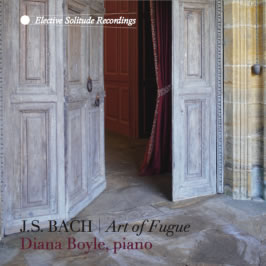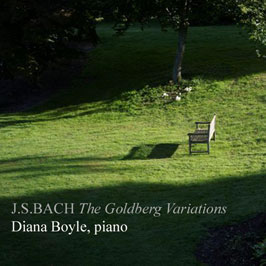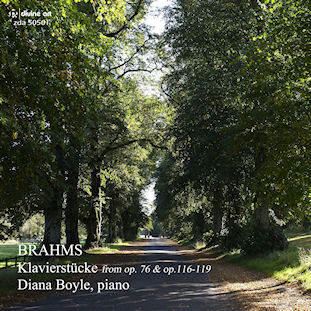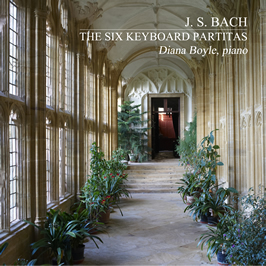Boyle offers Bach performances of the most remarkable concentration
British pianist Diana Boyle, a pupil of Artur Balsam who is now domiciled in Portugal, offers performances of Bach of the most remarkable concentration, following up on her previous discs of The Art of Fugue and the second book of The Well-Tempered Clavier.
The Overture in the French Style, which here occupies a whole disc to itself with a playing time of some 37 minutes, was published in 1735 as part of Clavier-Übung II (which also included the Italian Concerto). There are 13 movements, of which the first alone takes up nearly a quarter of an hour (the remaining sections are far shorter), with an emotionally wide-ranging exploration of Bach’s techniques. In keeping with the gravitas of the opening movement (itself entitled “Ouverture”), the Courante is serious and intimate. Boyle throughout gives the impression of carefully sculpting the music from a most interior place: Nowhere is this clearer than in Passepied I. Throughout, accents are perfectly judged, and a sure sense of rhythm forms the backbone of these fine readings; yet, in the Sarabande, Boyle finds perfectly a sense of the eternal, of a place beyond the mundane. The Gigue has a gloriously sedate way to it here, the concluding “Echo” a remarkable way of bringing back the music to its starting point of profound peace.
It’s telling that the Sarabande should be the whispered, still heart of Boyle’s reading, as it is that movement that again forms a pivot for the First French Suite. Here, Boyle finds a blend of peace and fantasy in the Allemande, while the first Menuet prolongs the tranquility of that Sarabande. If anything, she is more interior than Perahia on his recent DG account (no bad thing); she holds her head up against Andrszewski, too. Boyle’s concluding Gigue is stately, almost in the manner of a French Overture, whereas Perahia is grand but provides an identifiable Gigue energy. Perahia’s DG recording is cleaner, more clinical than Boyle’s on Divine Art; both work well, and in fact both seem perfectly chosen for the individual pianist’s approaches.
The group of Sinfonias begins with the E-Major, BWV 791, which has a quiet intensity that actually makes it perfectly suitable to follow on after the French Suite. Indeed, there is an inner glow around these performances of nine of the Sinfonias that elevates them. The limpidity of the D-Minor, BWV 790, is stunning; the E-Minor, BWV 793, is another of those moments of profundity, with the major mode of the ensuing E-Major (BWV 792) coming as a ray of light. Boyle opts to close with the F-Minor, BWV 795, its sense of delicious fragmentation (it is almost a skeleton of a piece) being perfect for Boyle’s approach.
Performed on a Grotrian-Steinweg piano, specially transported from Portugal to Potton Hall, this 2018 recording is superbly realized. It’s a pity that the French Suite is listed as “No. 12” on the disc back cover, but that typo hardly detracts from the excellence of the interpretations themselves.
October 12, 2019
Colin Clarke, Fanfare magazine









